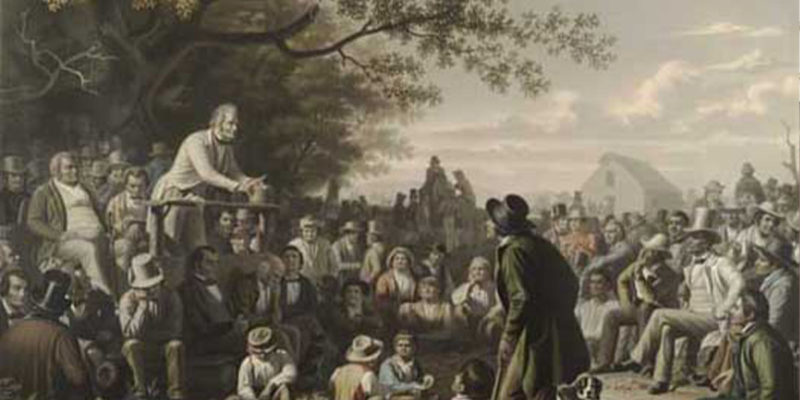Equality is treated as a universal and invariable concept, yet in practice authors manipulate it constantly to articulate their own interpretations, inadvertently transforming it into a political conception.
Has the overwhelming attention payed to the topic of equality in academic literature contributed to the achievement of equality in practice? Several political theorists have the potential to help us answer this question: Ronald Dworkin, Christian Sundquist, and Anna Stetsenko. An examination of equality among these various authors points to a fundamental flaw in the way the concept is understood: equality is treated as a universal and invariable concept yet in practice authors manipulate it constantly to articulate their own notions. By breaking down the facets discussed by these authors, we can note that some measures of equality are emphasized at the cost of others in all cases. Authors make choices in prioritizing certain questions over others. Sacrifices are made in each author’s definition, ultimately undermining the universality of the concept “equality.”
This idea that equality is multifaceted is not a new one; “it has been noted that any vision of equality defined in merely one dimension might inadvertently create inequalities in other dimensions” (Stetsenko 2017, 113). This is in part due to the fact that no author is advocating for or even discussing “true” equality in the totalitarian sense represented in Lois Lowry’s The Giver, where if one is blind, equality demands that all should be so. This idea of a true and total equality that reduces all to the same pain and pleasure exists purely in the dystopian novel section of bookstores, leading theorists to concoct their own manifestations of equality that do not insist on perfect equality. The concept of equality is first and foremost a political ideal. Dworkin and Stetsenko both explicitly utilize the term “political” in their own works to recognize this fact (Dworkin 1981a, 185; Stetsenko 2017, 113). “The demand for equality is most fundamentally a demand to end [the current] state of affairs and to attain a situation of equal more autonomy and equal self respect” (Nielsen 1981, 124). Dworkin, Stetsenko and Nielsen are all saying that equality is a concept representative of a goal, and that goal is not ultimately the true equality of all people. Stetsenko describes equality at one point as a “formula,” a word indicative of the way it is conceptualized in academia and policy — with something at the end that it is equating and achieving (Stetsenko 2017, 113). A goal is at the core of each author: for Dworkin it is creating a fair marketplace to enforce equality of resources; for Nielsen it is radical egalitarianism for justice; and for Stetsenko it is a concept and tool of social justice. Because each author is utilizing the idea of equality to serve a different (dare they say higher?) purpose, it becomes evident how they prioritize different aspects of the three questions aforementioned, causing a similar variation in their concepts of equality.
Examining equality through this political lens lays bare the myths of equal opportunity and meritocracy, concepts each of these authors has employed. Dworkin most evidently ties equality — and therefore his own political ideas embedded within his conception — to the development of an institution. “I argue that an equal division of resources presupposes an economic market of some form, mainly as an analytical device but also… as an actual political institution. … The market character of the auction… is an institutionalized form of the process of discovery and adaptation that is at the center of the ethics of that ideal” (Dworkin 1981a, 286). This describes the explicit linkage of Dworkin’s conception of equality of resources to the prevailing institution that governs his imaginary island. This system of institutions reflecting political preferences is already in place in contemporary society. Sundquist is quick to call out this fact, exposing that the reality of equal opportunity discourse is only a sham way of justifying and reinforcing structures of privilege and inequality by normalizing them: “The language and principles underlying equal opportunity reinforce structures of privilege” (Sundquist 2002, 2). It is not only in theory that political motives become interconnected with the discourse on equality, but also in practice.
The reality is that the system of meritocracy on which the United States currently prides itself is actually a political lie concealing the underlying inequalities. Any “equality” espoused by the population, whether through equal opportunity discourse or otherwise, is simply a manifestation of various political idealisms. Orlando Patterson in Beyond Compassion: Selfish Reasons for Being Unselfish, quips that “Americans seem to be confused about the notion of equality, and are either naive or hypocritical about the relationship between equity and the economic system” (Patterson 2002, 27). Richard Reeves, in his book Dream Hoarders, further dissects the myth of meritocracy by explaining that “we can have a meritocratic market in a deeply unfair society, if ‘merit’ is developed highly unequally and largely as a result of the lottery of birth” (Reeves 2017, 10). One can ultimately buy their way up the meritocratic ladder (beginning simply with extra childcare and SAT prep classes), making it a system that by no means is merely based on natural talents or equal merit.
Connecting equality to the market place makes it fail as a concept. In understanding this fact, it is important to recognize that many contemporary theories of equality, and especially those founded in economic arguments, are founded on the twentieth-century debate Robert Nozick instigated in response to John Rawls. Nozick effectively problematized the compatibility of equality and freedom to illustrate how freedom and liberty upset patterns of equality. Nozick describes the market as founded on principles of individualism and choice, concepts that are incongruous fundamentally with equality. Liberty will always upset pattern. This observation, if true, makes it difficult to obtain (any form of) equality, especially in contemporary society where freedom of choice is ingrained in the conception of democracy. As liberty upsets pattern, so individual choice upsets community welfare. This brings up a question posed at the beginning of the paper, the matter of how theorists might convince a population to relinquish their privileges. History has so far shown that general moral incentive is not enough. Authors have utilized a plethora of mechanisms to try and incentivize communal empathy, including the veil of ignorance, “selfish reasons for being unselfish,” the state of nature, inter alia. Yet, equality prevails as only truly desirable “if its costs are not too high,” representing other priorities for the majority (Nielsen, 1981, 121). Nielsen’s solution to obtaining equality is to overrule democratic means, have it “imposed from above by some dictatorial elite” (Nielsen 1981, 122). However, the conditions which prevail following the institution of Nielsen’s radical egalitarianism puts off most others: “the patterned distributions of radical egalitarianism would require such continuous and massive state intervention that it would undermine the individual liberty and the moral autonomy essential for the good of self respect” (Nielsen 1981, 123). This reflects the fact that people, especially those in the decision-making-elite, view society as a mechanism to uphold and protect rights of individual liberty rather than equalize conditions among all, and would therefore never consent (vis-à-vis democratic voting) to change this fact.
Another cleavage in academic interpretations of equality relates to whether equality is envisioned within the scope of group or individual rights. Those who focus on the rights of the group criticize those focused on the individual, claiming the latter ignore the historical contexts on which privilege is built. “The great American theme on individualism inhibits visions of privilege, since people tend to view themselves as individuals and not members of potentially privileged groups” (Sundquist 2002, 3). Privilege is inherently built into our contemporary society and years of racism, discrimination and systemic marginalization are the foundation on which everything is built. It is unsurprising, therefore, that group theorists — such as Rawls, Sunquist and Nielsen — see some form of redistributive justice as necessary atonement to achieve their versions of egalitarian society. Remedy for the past is imperative to achieve future equality. Yet those blinded by the rights of the individual see redistribution efforts as an infringement upon individual liberty. Society, which has been built on the rights of the individual has therefore built its institutions likewise. “Judges and legislators rationalize decisions that harm the equality interests of blacks by arguing that they must protect the neutral idea of individual liberty” (Sundquist 2002, 5). Those who uphold individual liberty, equal opportunity, and equality of resources support the establishment of equality from here on out, and are disturbed by redistributive concepts that would, in their minds, be taking something away from them that they believe they have earned and to which they are entitled. Alternatively, group theorists who consider how equality works within groups and how they themselves are part of a group, are attuned to the fact that the resources being taken away were most likely obtained through unequal and unfair means.
In examining these authors’ various conceptions of equality, it becomes evident that any discourse on equality is tied to a desired political outcome. No theorist, activist or political scientist is advocating for true and total equality, therefore transforming the word “equality” into a meaningless, amorphous, adaptable word representative only of an individual’s preferences. As equality becomes representative of a goal it seeks to change and remedy aspects of contemporary society, and, in doing so, confronts the question of how one simultaneously remedies the injustice of the past and prevents actions of future injustice in a manner that will be willingly adopted by all.
WORKS CITED
Dworkin, Ronald. 1981a. “What Is Equality? Part 1: Equality of Welfare.” Philosophy & Public Affairs 10 (3): 185-246.
Dworkin, Ronald. 1981b. “What Is Equality? Part 2: Equality of Resources.” Philosophy & Public Affairs 10 (4): 283-345.
Nielsen, Kai. 1981. “Impediments to Radical Egalitarianism.” American Philosophical Quarterly 18 (2): 121-29.
Patterson, Orlando. 2002. “Beyond Compassion: Selfish Reasons for Being Unselfish”” Daedalus 131 (1): 26-38.
Reeves, Richard V. 2017. Dream Hoarders. Brookings Institution.
Stetsenko, Anna. 2017. “Putting the Radical Notion of Equality in the Service of Disrupting Inequality in Education: Research Findings and Conceptual Advances on the Infinity of Human Potential.” Review of Research in Education 41: 112-35.
Sundquist, Christian. 2002. “Equal Opportunity, Individual Liberty, and Meritocracy in Education: Reinforcing Structures of Privilege and Inequality.” Georgetown Journal on Poverty Law and Policy.




 Compass is an online journal that provides a space for the work of talented undergraduates who have original and well-articulated insights on important ideas and issues relating to American democracy understood in the broad contexts of political philosophy, history, literature, economics, and culture.
Compass is an online journal that provides a space for the work of talented undergraduates who have original and well-articulated insights on important ideas and issues relating to American democracy understood in the broad contexts of political philosophy, history, literature, economics, and culture.